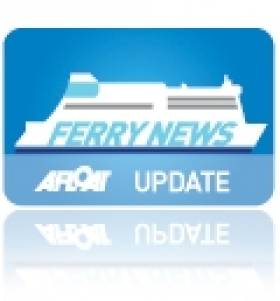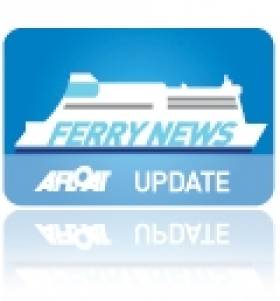Displaying items by tag: Stena HSS
Stena HSS Fast-Craft Operated Summer Service Closes
#StenaHSS – Stena Line's HSS fast-craft Dun Laoghaire-Holyhead operated sailings ended today, following four months of the seasonal-only service.
According to Stena Line the HSS Stena Explorer is to resume service for a short period over the Christmas and New Year period.
The first sailing (from Holyhead) is Saturday 20 December and as usual there will be a single sailing in each direction between Ireland and Wales.Crossing time of the HSS Stena Explorer is 2 hours 20 minutes. For more information click HERE.
HSS Stena Explorer was built for Stena Line in 1996 as the first of a trio of revolutionary 1500 class fast-craft vehicle carrying catamarans.
She is now the sole surviving member operating for her owners. Her sisters had served on other routes on the Irish Sea and the North Sea.
Stena HSS to Spring into April Action on Seasonal-Service
#HSSprings -Stena Line's HSS fast-craft as previously reported, will return to the seasonal service of the Dun Laoghaire-Holyhead route on 9 April and continue operating for the next four months.
The operator are running fares starting from €129 single for car and driver, on the service that will operate one round-trip per day with a 10.30am sailing from Holyhead and a 13.30pm sailing from Dun Laoghaire giving passengers the chance to take the 2 hour 20 minutes high-speed sea service across the Irish Sea to the UK.
Stena Line's Head of Travel, Orla Noonan said: "The brighter part of the year is set to get even brighter when Stena Line's iconic HSS springs into action on Wednesday 9 April. We hope the seasonal service of the vessel, well known for its style and speed, will get people thinking about booking a spring break or summer holiday to Britain in the coming months.
Seasonal-Only HSS Service Cease Sailings
#StenaHSS – Stena Line's HSS fastcraft operated Dun Laoghaire-Holyhead route ceased sailings last Tuesday on the seasonal-only service, writes Jehan Ashmore.
The central Irish Sea corridor route had been running since Easter and operated by the Stena Explorer, the last of a trio of HSS fastcraft remaining in service for the company.
Stena Explorer will be returning to the 2 hour 20 minute route on 20 December 2013 for a limited number of sailings over the Christmas and New Year period.
Stena Line run two conventional ferries between Dublin Port - Holyhead on the all year round 3 hour 15 minutes route.
Bon Voyage to Stena Voyager
The Stena Voyager high-speed ferry will make its final crossing between Belfast and Stranraer in mid-November.
BBC News cites the high cost of running the service, as well as its limited freight capacity, as reasons for the mothballing of the Stena HSS (High Speed Service).
The world's biggest high-speed ferry was a revelation when it was launched in 1996. The catamaran could reach speeds of up to 40 knots powered by enormous gas turbine engines.
But the rising cost of oil prompted a reduction in the ferry's cruising speed to save costs, making room for competition from conventional ferry routes with larger freight capacities.
The Voyager's fate was sealed when Stena Line announced plans to move its Stranraer port to a new location that will shave 20 minutes off the crossing for the two new but standard ferries that will replace it.
As previously reported on Afloat.ie, the Stena HSS between Dun Laoghaire and Holyhead will also be suspended from later this month, though it is planned to resume service in 2012 for the summer season.
































































